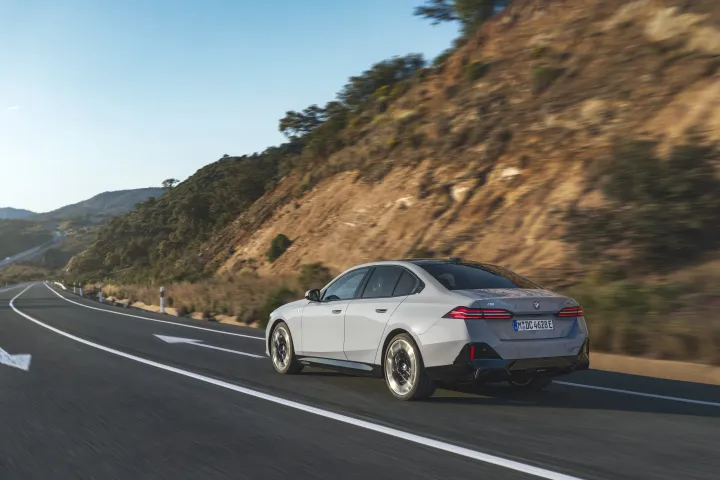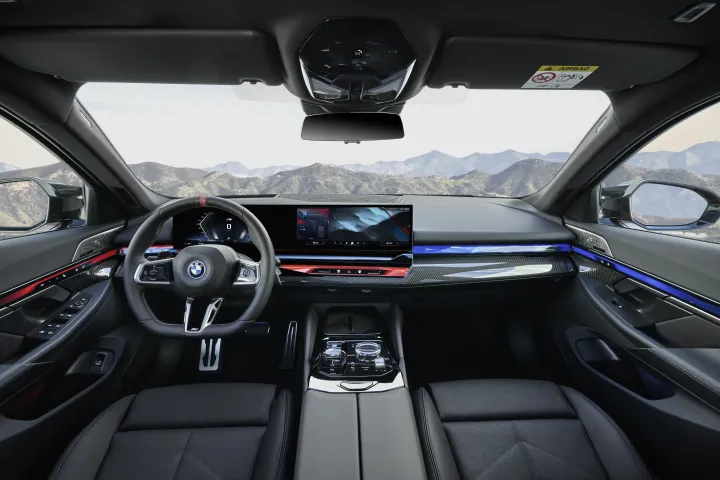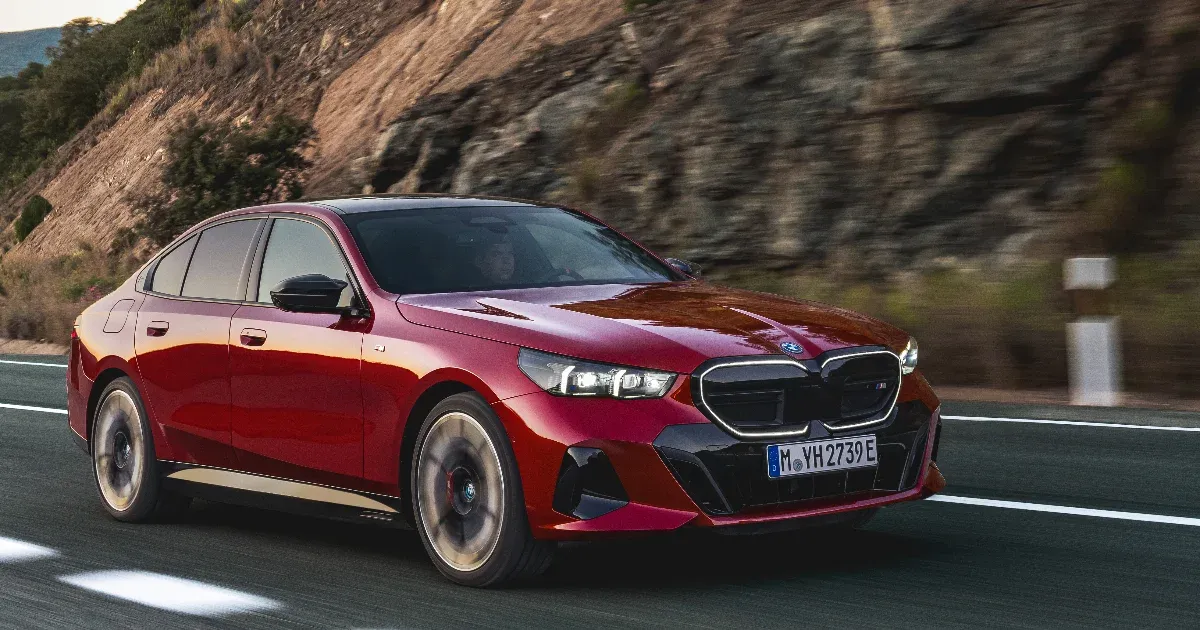BMW has caused a lot of grimaces in recent years simply by unconvincingly adapting the design of its cars to the tastes of the Asian public: this is how they introduced the ever larger illuminated radiator grilles, and perhaps that is the case. Why the brand’s large and large SUVs have become so similar to pickups. Compared to these, it’s a reassuring development that the i7, the 7-Series electric car made, and the eighth-generation 5-Series introduced Wednesday carries traces of rugged, conservative elegance. It’s a pretty traditional car with a lot of interesting technical features.
The former five-seater was the most popular in Europe last year, selling more than 53,000 copies, surpassing its traditional rivals, the Mercedes E-Class and Audi 6. BMW’s five-seater introduced and now available will also be converted into a station wagon, and the version Among them, the i5 Touring, is the world’s first electric car with such a body.
The BMW i5 M60 xDrive is an electric car with more than 600 horsepower. Until the arrival of the new M5 it will be the top-of-the-line version of the 5 Series. Photo: Daniel Kraus / BMW AG
The base will continue to be the sedan, with two electric versions announced first. The rear-wheel drive eDrive40 with 340 hp and 430 Nm of torque represents the entry level, and the top-of-the-line is the M60 xDrive. The latter has more than 600 horsepower, all-wheel drive and, depending on use, can travel 455 or even 516 kilometers between two charges, while accelerating from a standstill to 100 km / h in just over 3 seconds.
It’s interesting that even the 5-watt top speed is only 230 km/h, while the maximum achievable speed is 193 km/h in the case of the less powerful eDrive40, which can otherwise travel up to 582 km. Presumably, one of the most important considerations when designing was the battery-powered car range, as energy is consumed intensely at high speeds due to air resistance. Sitting in the floor of my BMW i5s is the same 81.2-kWh battery, which can be perfectly pumped from 10 to 80 percent in half an hour on a 205-kW DC charge.

BMW i5 eDrive 40 Photo: Daniel Kraus / DANIEL KRAUS / BMW AG For press purposes only
The range of engines for the traditional BMW 5 Series continues to be impressive. The 520i of just over two hundred horsepower is equipped with a two-liter four-cylinder turbocharged petrol engine and a 48-volt mild hybrid system, later there will also be a new six-cylinder, presumably called the 530i, four and six-cylinder diesel engines will also be available, as it was from Before, it would bear the designation 520d and 530d, and the plug-in hybrid, that is, the version that can be charged from the mains, will be back again. The youngest, the 520e, is equipped with a two-liter turbo engine along with the powerful electric motor, but a six-cylinder hybrid engine, the 550e, is also being developed, and two BMW hybrids can travel up to 100 km. electric car.
The top versions of the BMW 5 series have been called the M5 for decades, which have recently been equipped with 4.4-liter eight-cylinder turbo engines with a capacity of about 600 hp. In the case of the eighth generation, they are already working on the top model, and even a brand blog Recently released some spy photos and videosThe camouflaged prototype of the new M5 is currently doing test laps on the Nürburgring. According to the publication, the beast will be a 700-horsepower hybrid that will be introduced in 2024.

Instead of a dashboard, there are two horizontal screens, the driver’s eye movements are monitored by a camera, which can even be used to interfere with the vehicle’s handling – Image: BMW AG
The body of the car has grown significantly in all directions, so the sedan’s length of 5,060 mm is almost ten centimeters longer than its predecessor, while the car has become 1,900 mm wider, which exceeds the previous generation by almost three centimeters, and to all. This, it is 1,515 mm, compared to the previous five and half a centimeter height is included.
The electronic systems on board the 5 and i5 electric cars equipped with internal combustion engines are close to current Mercedes standards. The 12.3- and 14.9-inch curved displays above the dashboard help the driver and passenger seated next to them to navigate and enjoy. Car connectivity is ensured by a modem with 5G technology, they are familiar with Android Auto and Apple Carplay standards, so music and video voice call services can not only be easily conducted, even while driving, but also Bandwidth data transmission also makes driving support and navigation functions more efficiency and makes it more accurate.

Luggage space in the sedan version of the new 5 Series is 520 liters, in the case of the i5 it is 30 liters less.Photo: Daniel Krause / Daniel Krause / BMW AG For press purposes only
In recent years, all major manufacturers have been more conservative about the long-awaited arrival of self-driving, so BMW does not claim that the new 5 Series will be able to control itself in any environment, but among the advanced driving support functions, not only is the parking option Which can be controlled remotely from a mobile phone, which is also highlighted, but the car will also be able to change lanes on a multi-lane highway at speeds of up to 130 km, and the driver can start simply by looking in the rearview mirror. This is science fiction in itself, but it is significant that the option, which is already expensive, can only be used on roads with appropriate lane markings and, for the time being, will only be approved by the authorities in Germany, the United States. States and Canada.












































